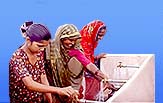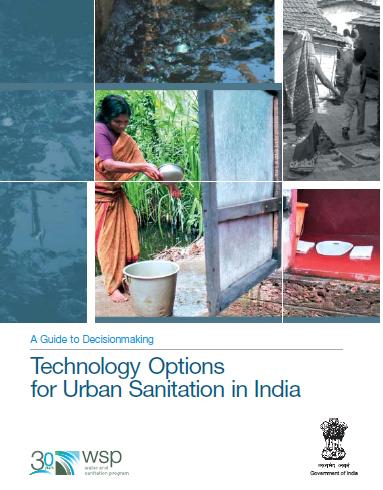/sub-categories/courses-toolkits-manuals-guides-and-handbooks
Courses, Toolkits, Manuals, Guides and Handbooks
The Gharial - Our river guardian - A factsheet prepared by the Ministry of Environment and Forests
Posted on 28 Apr, 2011 04:35 PMIt was found in Pakistan, Bangladesh, Burma and Bhutan, but is now extinct in these countries. Today, it is seen in a few places in Nepal. In India the major population of Gharials is found in the Girwa and Chambal rivers. It faces many threats to its survival which include fishing, linking of rivers, large irrigation canals etc.
India's forests and REDD+ - A factsheet prepared by Ministry of Environment and Forests
Posted on 28 Apr, 2011 04:29 PMThe benefits of working with REDD and the need and benefits of getting more ambitious by accepting REDD+, which is about finding financial value for carbon stored in standing forests which therefore incentivises the positive elements of conservation is also elaborated here.
Census: India, a nation of 1.21 billion - Article from Down to Earth
Posted on 25 Apr, 2011 05:30 PM
 India is the most populous nation after China (1,342 million). India hosts 17.5 per cent of the world’s population compared to China’s 19.4 per cent. Of 28 states and seven Union Territories, 20 states contribute to 98 per cent of India’s population.
India is the most populous nation after China (1,342 million). India hosts 17.5 per cent of the world’s population compared to China’s 19.4 per cent. Of 28 states and seven Union Territories, 20 states contribute to 98 per cent of India’s population.
Guidance manual for drinking water quality monitoring and assessment - A document by NEERI and NICD
Posted on 20 Apr, 2011 03:09 AMIn order to safeguard the health of the people, drinking water must meet quality standards. The main issues involved in drinking water safety are water quality management, surveillance and control mechanisms.
Levels of contaminants need to be ascertained through standard procedures. Each agency involved in water supply in India, has its own laboratory test practices and this manual details methods for all parameters adoptable by all laboratories.
Water safety plan: A manual for pilot study areas of Hyderabad
Posted on 20 Apr, 2011 02:03 AMThe most effective means of consistently ensuring the safety of drinking water supply is through the use of a comprehensive risk assessment and management approach, that encompasses all steps in water supply from catchment to consumer. Such approaches are called Water Safety Plans (WSPs).
The aim of a WSP is to organize and systematize records of management practices applied to drinking water and to ensure workability of such practices to organized drinking water supply.
Guidelines for water safety plans for rural water supply systems - A document by SIAES and WHO India (2009)
Posted on 20 Apr, 2011 01:10 AM Delivery of safe drinking water is vital for protecting public health and of promoting more secure livelihoods.
Delivery of safe drinking water is vital for protecting public health and of promoting more secure livelihoods.
The traditional approach to water quality and safety management has relied on the testing of drinking water, as it leaves the treatment works or at selected points, either within the distribution system or at consumer taps. It is referred to as ‘end‐product testing’.
Operation and maintenance for rural water supplies – A manual by Department of Drinking Water and Sanitation and the Water and Sanitation Program of World Bank
Posted on 17 Apr, 2011 07:23 AM This Operation and Maintenance (O&M) manual for rural water supplies by the Department of Drinking Water And Sanitation and Water and Sanitation Program of the World Bank complements their Gram Panchayat Handbook released in 2010 . It takes into account the current aspirations and challenges facing the sector, and builds on the framework already set out in the National Rajiv Gandhi Drinking Water Programme (NRDWP) and Strategic Plan 2011-2022.
This Operation and Maintenance (O&M) manual for rural water supplies by the Department of Drinking Water And Sanitation and Water and Sanitation Program of the World Bank complements their Gram Panchayat Handbook released in 2010 . It takes into account the current aspirations and challenges facing the sector, and builds on the framework already set out in the National Rajiv Gandhi Drinking Water Programme (NRDWP) and Strategic Plan 2011-2022.
Distributional implications of climate change in India – A policy research working paper by World Bank
Posted on 14 Apr, 2011 03:49 PMThis working paper by World Bank analyzes how changes in the prices of land, labor, and food induced by modest temperature increases over the next three decades will affect household-level welfare in India.
India's agricultural statistics at a glance – A Publication by Directorate of Economics and Statistics, Department of Agriculture and Cooperation (2010)
Posted on 13 Apr, 2011 08:06 AM “Agricultural Statistics at a Glance 2010” is compiled by the Directorate of Economics and Statistics, Department of Agriculture and Cooperation. It provides a wide range of data on outlays, expenditure and capital formation, crop production and productivity across States, markets and prices, terms of trade, price support and procurement, domestic and international trade, credit, insurance etc.,
“Agricultural Statistics at a Glance 2010” is compiled by the Directorate of Economics and Statistics, Department of Agriculture and Cooperation. It provides a wide range of data on outlays, expenditure and capital formation, crop production and productivity across States, markets and prices, terms of trade, price support and procurement, domestic and international trade, credit, insurance etc.,
Timely availability of reliable information on agricultural output and other related aspects is of great significance for planning and policy making particularly, in the management of concerns in areas such as food security, price stability, international trade etc. The information is extremely useful in identifying problem areas and the nature of required intervention in terms of spatial, temporal and qualitative inferences. The handbook presents a comprehensive picture of the progress made by the agriculture sector at the All India level as well as across the States.
Technology options for urban sanitation in India - A guide to decision making by WSP and MoUD (2008)
Posted on 11 Apr, 2011 12:20 AM This guide by the Water and Sanitation Program and the Ministry of Urban Development, is meant to enable municipalities and urban local bodies make informed decisions on sanitation technologies.
This guide by the Water and Sanitation Program and the Ministry of Urban Development, is meant to enable municipalities and urban local bodies make informed decisions on sanitation technologies.
Poor sanitation facilities and the lack of sanitation facilities are a health hazard and exact a human toll on human health. Realising the magnitude of the problem and the resulting fallout, the Government of India has been increasing the funding for sanitation infrastructure via the Jawaharlal Nehru National Urban Renewal Mission (JNNURM). However, money alone cannot solve the problem. Urban local bodies and municipalities need sound advice on technological options, planning and implementation to ensure that the money is well spent and the sanitation projects cater to the need of the target audience.